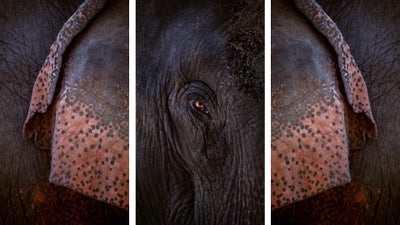A Guide To Ethical Tourism

It is no doubt that interacting with animals could be the highlight of your vacation! Most people who choose these encounters do so because they love animals, but so many are unaware of the effect it has on the mental and physical health of these animals. After doing tons of research myself it is sad to see that we tend to use animals as a photo prop for our own entertainment even if it means shorter life spans and stressful living conditions for our animal friends.
So that's why I wanted to take this opportunity to talk about how you can help shut these exploitative and unethical organizations down while still getting to see and interact with these amazing animals ethically!
Research carried out by the University of Oxford's Wildlife Conservation Research Unit (WildCRU), has uncovered that at least 560,000 wild animals are currently in wildlife tourist attractions across the world and that number is quickly rising due to the boom in social media influencers.
So the first question you should seek an answer to before booking a wildlife adventure is: Where did these animals come from? Were they taken from the wild to be used as a photo prop, or were they rescued by an organization that cares about protecting these animals whether it be from abusive conditions or being hurt/sick in the wild.
An ethical organization will tell you straight away where their animals came from. A lot of the time it's even on their website and if you aren't sure just send them a quick email!
WildCRU's study also found that abuses are happening in approximately three out of every four attractions. These abuses include being taken from their mothers at a very young age, being beaten, harmed, or scared so they will be compliant, being drugged, declawed, and/or having teeth removed.
Unfortunately a lot of the abuse happens behind closed doors and isn't evident to visitors. World Animal Protection estimates that around 110 million people worldwide visit cruel wildlife tourist attractions annually and 80% of tourists cannot see the negative impact it has on the animal's welfare.
So the next question you want to ask yourself is who is benefiting from this interaction? Is what is being done at this organization for the benefit of the animals or the visitors? Beyond catering to tourism, what is their role in maintaining, promoting, and bettering animal welfare?
An organization that is truly committed to animal welfare will ensure that all activities will benefit the animals. For example, if you go somewhere where animals are asked to perform tricks, give rides, or pose for photos, that's obviously just to entertain visitors. You want to avoid supporting any organization that advertises these activities or any behavior that is unnatural for that animal.
If you aren't sure if a behavior is natural or not just ask yourself, "Would this animal do this in the wild?" Remember these animals aren't pets and these unethical organizations are only able to stay in business if people keep supporting them.
If you are reading this and have realized that you may have taken part in an unethical animal encounter it's okay! I have been there too so don't beat yourself up about mistakes in the past. This is your opportunity to learn and help educate others!
Your role as an ethical tourist should be observing the animals in their natural habitat with an organization that is working to further protect those animals. If you're interacting with the animals directly, it should be in a way that honors their natural behavior and life in the wild.
The best way to stop cruel and unethical businesses from operating is by doing your research and spending your dolla dolla bills on humane organizations that are doing their part to help protect these amazing creatures. Encountering wild animals can be the most memorable part of a vacation, just make sure you're doing it the right way. 🙂
The elephant prints above are available in the Shop All section of this site. When you make a purchase 10% of all the proceeds go directly to World Animal Protection.
Resources
- 1 Moorhouse T.P., Dahlsjo C. a .L, Baker S. E, D'Cruze N. C., Macdonald D. W., 2015. The Customer Isn't Always Right--Conservation and Animal Welfare Implications of the Increasing Demand for Wildlife Tourism. Plus ONE 10(10): e0138939 doin: 10.1371/journal.pone.0138939.
- World Animal Protection. 2014. Wildlife on a Tightrope: An overview of wild animals in entertainment Thailand. [Online] Available at: http://www.worldanimalsprotection.org/sites/defaut/files/int_files/wildlife-on-a-tightrope-thailand.pdf.
- World Animal Protection. 2015. Breaking Africa's elephants: Exposing the rise of cruel tourist rides. [ONLINE]. Available at: http://www.worldanimalprotection.org/sites/default/files/int_files/breaking_africas_elephants_report.pdf

